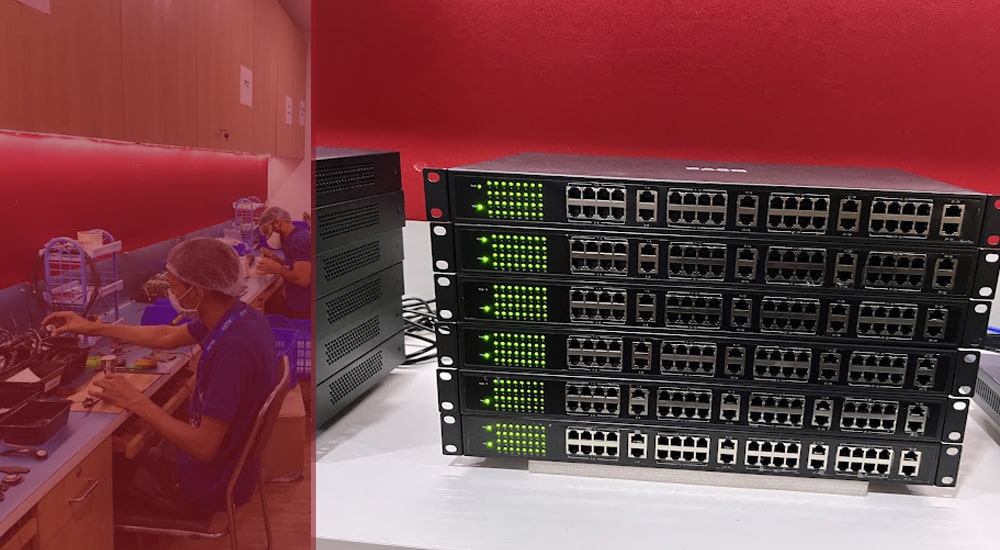
Understanding PRI Technology
Before diving into PRI Gateways, it's essential to understand the foundation of PRI technology.
PRI is a standard telecommunications interface that enables voice, data, and video transmission over traditional telephone lines. It AKOM Technologies is part of the ISDN (Integrated Services Digital Network) family and is widely used in enterprise-level telecommunication setups.
A PRI line consists of 23 bearer (B) channels and one data (D) channel in the United States, making a total of 24 channels (commonly referred to as T1). In Europe and other parts of the world, the configuration is typically 30 B channels plus one D channel (E1). Each B channel carries voice or data, while the D channel handles signaling and control functions. This allows for the simultaneous transmission of multiple voice calls or data sessions over a single line, providing high capacity and reliability.
Key Features of a PRI Gateway
- Seamless Conversion: Converts PRI signals into IP packets for use with SIP (Session Initiation Protocol) trunks and other VoIP services.
- Multiple Channel Support: Handles multiple simultaneous voice channels, allowing for high call volume, ideal for call centers and large businesses.
- Compatibility: Works with both legacy PRI-based PBX systems and newer IP-based telephony systems.
- Cost-Efficiency: Reduces the need for extensive infrastructure overhaul, allowing businesses to migrate to VoIP without replacing their entire telephony system.
- Call Management Features: Often includes features such as call routing, caller ID, call forwarding, and conferencing.
- High Availability: Ensures reliable communication with redundancy and failover mechanisms, minimizing downtime in case of network or system failures.
- Security: Provides encryption and firewall features to protect voice data from security threats such as unauthorized access or eavesdropping.
How Does a PRI Gateway Work?
At its core, a PRI Gateway serves as a protocol translator. When a voice call is initiated on the PSTN or a PRI line, the gateway captures the call, converts the traditional PRI signal into IP packets, and transmits it over the VoIP network. On the receiving end, the gateway performs the reverse process, converting the VoIP signal back into a PRI-compatible format for delivery to the destination phone.
This two-way conversion allows businesses to use their legacy PRI-based systems and infrastructure while reaping the benefits of VoIP technology, such as cost savings, remote accessibility, and enhanced flexibility.
Benefits of Using a PRI Gateway
- Cost Savings: One of the most significant benefits of deploying a PRI Gateway is cost savings. By integrating with a VoIP system, businesses can drastically reduce their telephone bills, especially for long-distance and international calls. The gateway enables the use of SIP trunks, which are generally cheaper than traditional PRI lines.
- Smooth Transition to VoIP: A PRI Gateway allows businesses to maintain their existing telephony infrastructure while transitioning to VoIP. This eliminates the need for a complete system overhaul, saving on upfront costs and minimizing disruption to daily operations.
- Scalability: Traditional PRI lines have fixed capacities, but with a PRI Gateway, businesses can easily scale their communications infrastructure. The addition of new SIP trunks or VoIP lines is relatively simple and does not require the installation of new physical lines.
- Improved Call Quality: VoIP technology has improved significantly in recent years, and a properly configured PRI Gateway can ensure that call quality remains consistent, if not superior to that of traditional PRI lines. Modern gateways often include features like echo cancellation, jitter buffering, and packet loss concealment to optimize call quality.
- Reliability and Redundancy: PRI Gateways often include failover mechanisms that automatically switch to backup lines in case of a failure. This ensures high availability and reliable communication, even in the event of network outages or hardware issues.
- Advanced Call Handling: A PRI Gateway offers advanced call management features such as call routing, forwarding, and conferencing. This can significantly enhance communication efficiency within a business, especially for customer service departments and call centers.
- Interoperability: PRI Gateways are compatible with a wide range of telephony systems and protocols, making them an excellent choice for businesses with diverse communication needs. Whether you're using an older analog PBX or a modern IP-based system, a PRI Gateway can seamlessly integrate them.
Common Use Cases for PRI Gateways
- Call Centers: High call volume environments such as call centers can benefit immensely from PRI Gateways. The gateway allows the center to manage multiple simultaneous calls, ensuring that customer inquiries are handled efficiently.
- Enterprises with Legacy Systems: Businesses with large investments in legacy telephony systems can use PRI Gateway to integrate VoIP without discarding their existing equipment.
- Multi-Location Businesses: Companies with multiple offices or branches often use PRI Gateways to consolidate their communications infrastructure. Calls between offices can be routed over the VoIP network, saving on long-distance charges.
- Telecom Service Providers: Telecom providers use PRI Gateways to offer hybrid solutions to their customers, enabling them to connect both traditional PRI lines and modern SIP trunks.
Choosing the Right PRI Gateway
When selecting a PRI Gateway for your business, several factors need to be considered:
- Number of Channels: Ensure that the gateway supports the number of channels required for your business operations.
- Compatibility: The gateway should be compatible with your existing PBX or telephony system.
- Scalability: Consider future growth and ensure that the gateway can scale with your needs.
- Call Quality Features: Look for features that enhance call quality, such as echo cancellation and packet loss concealment.
- Security: Choose a gateway that offers robust security features to protect against unauthorized access and cyber threats.
Conclusion
A PRI Gateway is an invaluable tool for businesses looking to bridge the gap between traditional telephony systems and modern VoIP technology. It offers a cost-effective, scalable, and flexible solution that enables businesses to maintain their existing infrastructure while benefiting from the advantages of internet-based communication.





